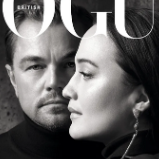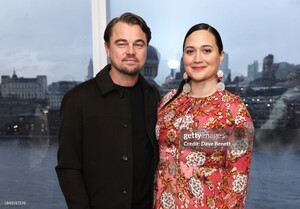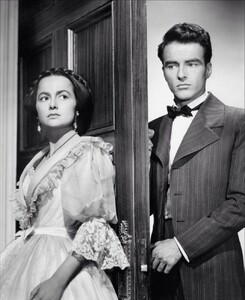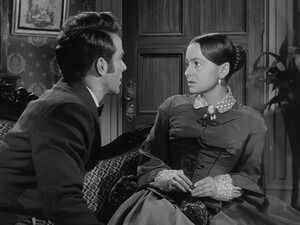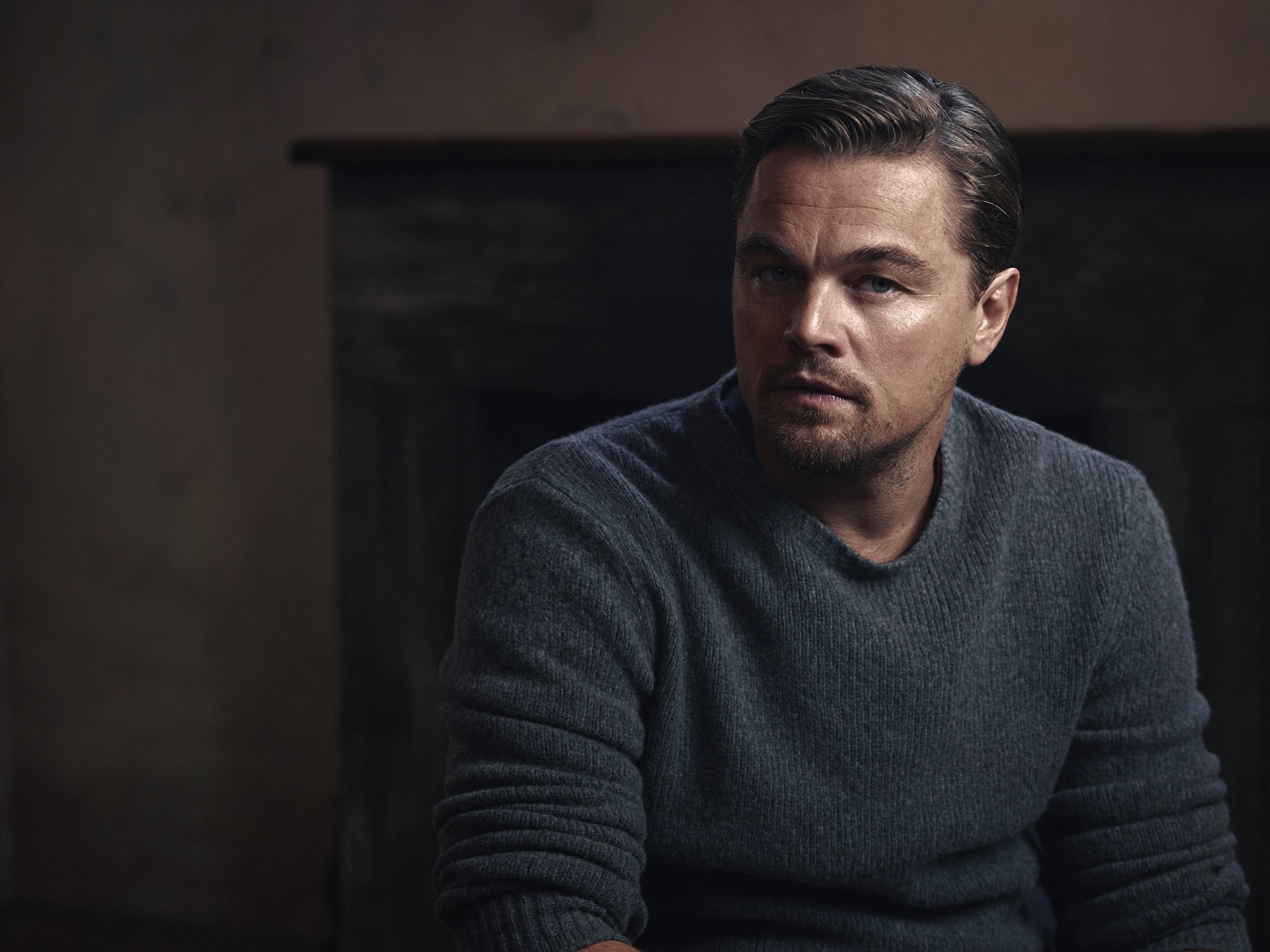
Everything posted by akatosh
-
Leonardo DiCaprio - (Please Read First Post Prior to Posting)
Fantasia and the Color Purple girls about Leo: (at 2:30)🤭
-
Leonardo DiCaprio - (Please Read First Post Prior to Posting)
Looks like they were doing interviews for the european press. Hopefully we will get the videos soon. And the first video arrived
-
Leonardo DiCaprio - (Please Read First Post Prior to Posting)
‘Killers of the Flower Moon’ stars Leonardo DiCaprio and Lily Gladstone praise the film’s historical accuracy and each other in passionate Wednesday chat In an online interview/webinar designed to spark awards momentum with members of the entertainment media on Wednesday, “Killers of the Flower Moon” stars Lily Gladstone and Leonardo DiCaprio discussed the importance of maintaining the historical accuracy of director Martin Scorsese’s epic while at the same time praising the work and humanity of one another. DiCaprio portrays Ernest Burkhart and Gladstone his wife Mollie – a member of the Osage Nation – in telling the real-life story of a series of brutal murders of the Osage people fueled by oil and greed in early 1920s Oklahoma. “Speaking specifically about working with Mr. Scorsese, we’ve done a few biopics together based in real history,” DiCaprio says. “This had a whole new level of responsibility in my opinion. A lot of things could have been up for our own interpretation, or our own viewpoint, on how to tell this story. But we knew based on how important this was historically, and this was a sort of lost, very dark chapter in American history that we needed to tell correctly. And that meant we needed to listen. That was our responsibility, not only after reading the book and delving into all of the great research that (author) David Grann did. We needed to go to the Osage community and hear their perspective on this story. SEELily Gladstone dethrones Emma Stone as Oscar Experts’ front-runner for Best Actress Gladstone, who is herself of indigenous heritage, shared that she and DiCaprio “took several community meetings together” on location in Oklahoma. “It was really incredible actually walking into a community that had no idea of who we were as individuals but knew who we were there to play,” she said. “And immediately, the community kind of started treating us and regarding us as those characters…Just taking these meetings together, hearing about who these people (we were playing) were, and hearing it from Osage in meeting after meeting…So I think as we were building our characters individually, we were also taking these meetings together, building what the dynamic may have been as this couple.” She adds that it wasn’t at all clear at the outset that the dynamic of hers and DiCaprio’s characters was going to function onscreen the way that it did between the actual Ernest and Mollie in reality. “It was a really fun acting exercise in those early weeks and reminded me of just being in school again where you’re just given lines and text without any context.” DiCaprio wasn’t at all surprised that his director was even more tied to delivering the authenticity of the story than he and Gladstone were. “There were moments with Marty on the set where I looked at him and he said, ‘I feel this story in my bones. I feel this incredible responsibility to tell this correctly’,” he recalls. “And especially after doing research and looking back at history from a Native (American) perspective, how Hollywood has portrayed these stories in the past, this was an incredibly sensitive one. It’s generational. The Osage are still affected by this moment in history, ad we just knew it was our job to listen and get their perspective. A lot of those meetings and working with Lily really shaped (the film).” In terms of how well the actors got along during the shoot, well, it was clearly the mutual admiration society. Asked about something unexpected she learned about DiCaprio as they worked together, Gladstone responds, “How incredibly generous he is – I mean, as a human being, as an actor.” She admits it was intimidating being the new kid on the block who hadn’t worked at this level before. “The imposter syndrome feelings, the feeling that you’re not going to get it right. All of that was just so easy to get around because (DiCaprio is) so patient. he’s so generous, he’s so committed to this film. I mean, he told me the first week how much this film meant to him, and I could see that immediately. And just the amount of space I was given, the amount of encouragement I was given. And that continues. He’s one of the most generous people I’ve met in my life.” DiCaprio was equally taken with his co-star. “I knew after our initial meeting how incredibly intelligent she was,” he emphasizes, “(and) she really inhabited the soul of Mollie. Oftentimes, she came on set and it felt like the presence of Mollie was there. She came up with so many amazing moments and dynamics. The whole notion of me being the trickster, the coyote, which was a prevalent theme and something that really shaped the entire relationship between these two characters was all her idea…I mean, it was amazing the amount of texture she brought to not only her performance, but the entire structure of the movie and shaping the movie that you see today.” Both Gladstone and DiCaprio are among the frontrunners in this year’s Oscar race for Best Actress and Best Actor, respectively. In fact, Gladstone this week overtook Emma Stone (“Poor Things”) for first place among the expert journalists weighing in at Gold Derby. DiCaprio remains locked in the fourth position behind Cillian Murphy (“Oppenheimer”), Bradley Cooper (“Maestro”) and Paul Giamatti (“The Holdovers”). https://www.goldderby.com/article/2023/killer-of-the-flower-moon-leonardo-dicaprio-lily-gladstone-interview/
-
Leonardo DiCaprio - (Please Read First Post Prior to Posting)
Oh I would love for Leo to work with Greta. Greta would definitely be willing because she loves/loved Leo. About the new project: I wouldn't mind if Leo did two movies back to back again. The Wager seems unlikely because I think they need time for pre production and for the script. I'm happy when he's on set again early next year. Then we maybe have a finished movie by december🙏
-
Leonardo DiCaprio - (Please Read First Post Prior to Posting)
New pic of Leo, Lily and Marty and I think the one of Leo below is also new:
-
Leonardo DiCaprio - (Please Read First Post Prior to Posting)
A long interviews with Lily:
-
Leonardo DiCaprio - (Please Read First Post Prior to Posting)
In an interview from e news with Leo she already talked about this project and that she had Leo's immense support for it. Maybe he is producing this?
-
Leonardo DiCaprio - (Please Read First Post Prior to Posting)
-
Leonardo DiCaprio - (Please Read First Post Prior to Posting)
-
Leonardo DiCaprio - (Please Read First Post Prior to Posting)
So interesting. I could watch these behind the scenes videos for hours.
-
Leonardo DiCaprio - (Please Read First Post Prior to Posting)
They just can't keep their hands off each other: 🤭 A new Leo project is mentioned but he wasn't allowed to talk about it: Breaking Baz: Playful Leonardo DiCaprio Joins ‘Killers Of The Flower Moon’ Co-Star Lily Gladstone In London – And Cate Blanchett Came Too EXCLUSIVE: Leonardo DiCaprio was in a playful mood when he and Lily Gladstone, his co-star in Martin Scorsese’s disturbingly thrilling American history lesson Killers of the Flower Moon, were at the center of a small gathering at the Odeon Luxe in London’s Leicester Square. DiCaprio ridiculed a suggestion that players for English Premier League teams were better athletes than U.S. basketball players. “Better than Michael Jordan?” he scoffed. “The greatest basketball player ever!” Grinning, he conceded that he doesn’t follow soccer teams. “What’s Arsenal?” he demanded, going for the jugular. Sport wasn’t really on the agenda but it usually helps to encourage banter at these events. DiCaprio and Gladstone were in the West End Monday night for an awards screening of Killers of the Flower Moon. DiCaprio’s friend, Cate Blanchett, was also in attendance, ready to introduce the actors at the screening. “We didn’t get to talk or promote for the longest time because of the strike,” Leo said. “We’re making up for lost time,” he added. They were off to Paris on Tuesday. “Short visits. In, then out,” Leo explained. The Oscar winner has made six films with Scorsese: Gangs of New York, The Aviator, The Departed, Shutter Island, The Wolf of Wall Street, and now Apple Studios picture, Killers of the Flower Moon. Does he figure he’ll do another movie with Scorsese? His eyes widened. “This one took seven years of development and production. It would be great but any film takes time to develop. There’s rights to get right. We went up for this a couple of times.” Well then, what’s his next project? “I have one but I don’t think I’m allowed to discuss it. I want to but I don’t think I’m allowed. I would love to give you a scoop, but I can’t,” he pleaded sheepishly. Now, 1,101 actors and filmmakers have given me the exact same lament over the years but, hey, this was Leonardo DiCaprio being utterly charming and giving naught away. We were having a laugh, though. The fact that he was even exchanging banter, was in itself an occurrence rarer than hen’s teeth. There can never be substantial conversations at such occasions but even having him take the piss out of my sporting favorites brightened up what could have been a dull Monday night. His good cheer had something to do with the seven Golden Globe Awards nominations Killers of the Flower Moon had received earlier in the day, including both he and Gladstone being cited for their performances. Full disclosure: I’m a Golden Globe Awards voter, one of 300 from 75 countries. I should note that I did not have as much as a sip of water at the reception. Zero. Nothing. Not even a humble peanut. Wait. There weren’t any peanuts. Nothing to eat at all, actually. But plenty of booze and plenty of water. I had none of it. Bit extreme. But there are practical reasons for not indulging at these soirées but now’s not the time. I have thought about Lily Gladstone a lot since we met at Cannes where Killers of the Flower Moon had its world premiere. At the heart of the movie is a love story of Ernest Burkhart, a blundering bounder who, with an unfriendly shove from his malevolent uncle, played by Robert DeNiro, woos Gladstone’s Mollie, because as a member of the Osage Nation, she’s heir to oil rights under Osage County in Oklahoma. Even though Mollie’s hurled through hell, Gladstone gave her a calmness that’s utterly beguiling. Gladstone said she remembers watching the film at Cannes and seeing members of the Osage community up on the screen riding around in their finest clothes in swanky cars. And hearing the score from Robbie Roberson, who died in August, was poignant because “my dad was a huge fan.” The important point though, she noted, was that “Native people are really proud. We’re very clean, we’re well conducted, we have a regality about our tradition and our ways that people just don’t realize. “Seeing Indian wealth represented on screen with Robbie Robertson’s score over the top of it was like, this is real. This is happening. This is the way it should be and I got emotional because it’s like, it should have stayed that way.” Upcoming, after next March when awards season’s over, Gladstone has a movie project in development and she’s executive producing, plus a television drama, but, alas, “I can’t talk about them.” But she was able to share details about a beloved project concerning a biopic of Mildred Bailey. Another example “of excellent Natives through history that we don’t ever see.” A film about Bailey, ”the first woman to sing in front of a big band, she got Bing Crosby’s career going, and she gave a job to Billie Holiday’s mom when Billie was trying to break through,” is being developed with Erica Tremblay (Reservation Dogs), who directed Gladstone in the feature, Fancy Dance. “A lot of people say Mildred Bailey was Billie Holiday before Billie Holiday was, and she sang in this very similar style,” Gladstone revealed. Bailey’s singing, Gladstone noted, was “actually very influenced by where she grew up. She’s from Coeur d’Alene people from Idaho.” During World War II, Bailey was a radio fixture. ”She had everybody on her radio show, she was a big deal at the time, but history erased her.” Bailey was mixed Coeur d’Alene and Scandinavian but her record labels didn’t know how to present her. ”They tried to label her the Great White jazz singer and when she pushed back on that then they started writing about her as a Black jazz singer, and she’s like, neither,” Gladstone says. “So they clearly erased her Indigeneity while she was famous and then since she passed away she got erased from history,” Gladstone sighed. The Mildred Bailey film’s way off in the future, she and Tremblay are focussing on getting Fancy Dance sold. Mildred Bailey’s turn will come though. Already Gladstone’s linked up with Stella Heath, an actor and singer who’s acting as her vocal coach and guide to all things concerning Mildred Bailey. ”She has the whole arsenal of Mildred’s history,” she said admiringly. Turning, Gladstone looked over at Leo. “I’m so happy for him,” she beamed. https://deadline.com/2023/12/leonardo-dicaprio-lily-gladstone-london-screening-killers-of-the-flower-moon-1235662842/
-
Leonardo DiCaprio - (Please Read First Post Prior to Posting)
Screening and Q&A in London:
-
Leonardo DiCaprio - (Please Read First Post Prior to Posting)
Leonardo DiCaprio, Killers of the Flower Moon “I am honored by this Golden Globe nomination, standing alongside such remarkable performers. I am grateful for the opportunity to reunite with the incomparable Martin Scorsese and legendary Robert De Niro and am thankful for this entire cast and crew. The experience of collaborating with Lily Gladstone has been truly extraordinary. She is the soul of our film and helped to bring this sinister and painful part of our nation's history to life. This nomination is a reflection of a collaboration—a reminder of the transformative power that emerges from telling meaningful stories. Thank you to the Golden Globe voters for this recognition and acknowledging the tireless dedication of this entire team.” https://www.eonline.com/news/1391140/jennifer-lawrence-emma-stone-and-more-stars-react-to-2024-golden-globe-awards-nominations
-
Leonardo DiCaprio - (Please Read First Post Prior to Posting)
Leo and Lily nominated for Golden Globes!! And the film, Marty, De Niro, Eric Roth and Robbie Robertson as well.
-
Leonardo DiCaprio - (Please Read First Post Prior to Posting)
Lots of wins and nominations. Love it. Putting Lily in supporting and then not letting her win is kind of insulting. But anyways it's just one critic group of many. In about 1,5 hours the Golden Globe nominations will be announced. And I'm sure our KOTFM team will be announced in many categories
-
Leonardo DiCaprio - (Please Read First Post Prior to Posting)
Lily seeing the future. 🤭 I wish they would date/marry for real.😊 They seem to have a lot in common and are so cute together. https://www.instagram.com/reel/C0jwLXyPQ4T/?utm_source=ig_web_copy_link&igshid=MzRlODBiNWFlZA==
-
Leonardo DiCaprio - (Please Read First Post Prior to Posting)
Golden Globes win for Leonardo DiCaprio (‘Killers of the Flower Moon’) would tie him with Jack Nicholson, Tom Hanks Very few performers who became Golden Globe nominees in their teens can claim to have stayed in the organization’s good graces as adults, but, with 13 notices and three wins spread over nearly 30 years, Leonardo DiCaprio is more justified in doing so than anyone else. As it happens, the film star has picked up multiple Golden Globe bids during each decade of his adult life, and he is now working on squeezing in another just before he enters his 50s. If he winds up clinching his third Best Film Drama Actor trophy for “Killers of the Flower Moon” this winter, he will tie the illustrious record for most victories in that category. DiCaprio’s previous Golden Globe wins came for his lead performances in the dramas “The Aviator” (2005) and “The Revenant” (2016) and the comedy “The Wolf of Wall Street” (2014). This potential new drama bid would be his ninth, following unsuccessful ones for “Titanic” (1998), “Catch Me If You Can” (2003), “Blood Diamond” (2007), “The Departed” (2007), “Revolutionary Road” (2009), and “J. Edgar” (2012). As luck would have it, this would also mark the fourth general instance of Martin Scorsese directing him to a Golden Globe nomination, after 2005, 2007 (“The Departed”), and 2014. As of now, the only two triple champions in the Best Film Drama Actor category are Tom Hanks (“Philadelphia,” 1994; “Forrest Gump,” 1995; “Cast Away,” 2001) and Jack Nicholson (“Chinatown,” 1975; “One Flew Over the Cuckoo’s Nest,” 1976; “About Schmidt,” 2003). Given that both actors have taken home at least one additional comedy/musical trophy (“Big,” 1989; “Prizzi’s Honor,” 1986 and “As Good As It Gets,” 1998), they also stand as the only two male recipients of four or more Golden Globes for lead film acting. DiCaprio could, of course, join Hanks in second place in that respect, thereby breaking out of his current tie with fellow three-time lead victors Peter O’Toole, Jack Lemmon, Dustin Hoffman, and Robin Williams. Upon earning recognition in 2020 for his comedic turn in “Once Upon a Time in Hollywood,” DiCaprio became the sixth man with 10 or more lead film Golden Globe nominations to his name. Having most recently contended as a star of “Don’t Look Up” (2022), he is now expected to emulate Lemmon, Nicholson, and Al Pacino as the fourth male actor to collect an even dozen such notices. At 49, he will have done so at least six years faster than any of his predecessors and would also surpass Pacino (who was 50 in 1991) as the youngest man to reach a drama actor nominations total of nine. Win or lose, DiCaprio is bound to soon strengthen his status as a bona fide Golden Globes darling, and, with so many years presumably left in his career, one can fairly surmise that it will only be a matter of time before he is promoted to the sole holder of some – if not all – of said records. https://www.goldderby.com/article/2023/2024-golden-globes-leonardo-dicaprio-killers-of-the-flower-moon/
-
Leonardo DiCaprio - (Please Read First Post Prior to Posting)
Killers of the Flower Moon, Oppenheimer, Poor Things Lead CFCA Nominations https://www.rogerebert.com/festivals/killers-of-the-flower-moon-oppenheimer-poor-things-lead-cfca-nominations Leo, Lily, Marty and the film got a total of 10 nominations
-
Leonardo DiCaprio - (Please Read First Post Prior to Posting)
Interesting facts from Lilky about about Mollie Ernest. And also the inspiration she took from The Heiress: Lily Gladstone caused a minor stir in Hollywood in September 2023, when she announced she’d be campaigning for the 2024 Oscars in the Best Actress category for her part as Mollie Burkhart, the Osage woman with oil headrights who falls victim to the machinations of white settlers, in Martin Scorsese’s Killers of the Flower Moon. Most pundits had expected her to submit for Supporting Actress – perhaps because Gladstone’s is a subdued, often silent performance, especially by contrast with the bravura showmanship of the film’s two male leads; perhaps because Gladstone, who is of Siksikaitsitapi and Niimiipuu heritage, would be only the third Indigenous lead actress Academy Award nominee, after Keisha Castle-Hughes (Whale Rider, 2003) and Yalitza Aparicio (Roma, 2018), and the first from the USA. But while Gladstone may take third billing to Leonardo DiCaprio and Robert De Niro in the film’s promotion, it’s her performance that’s been singled out by many critics for praise since the film’s premiere at Cannes this year. Anthony Lane, in the New Yorker, lauded her as “unmistakably the movie’s most compelling presence”, while the LA Times’s Justin Chang described “an actor who can set off more emotional reverberations with a barely cracked smile than some performers manage in an entire monologue”. There’s no doubt that Gladstone is both the film’s heart and its face. The frantic, testosterone energy so familiar in Scorsese’s works quietens when the camera encounters the lines and planes of that face, at once impenetrable and heartrendingly open. Gladstone herself cites Olivia de Havilland as an influence, but there’s something here, too, of what the philosopher Stanley Cavell described as Garbo’s “power of privacy”: a sense of an inner life that lies just beyond our grasp. One suspects this is what drew Kelly Reichardt to cast Gladstone in two films, Certain Women (2016) and First Cow (2019) – the former widely heralded as Gladstone’s breakthrough despite the fact that she’d already put in a luminous turn as a grieving widow in Alex and Andrew J. Smith’s Winter in the Blood (2013). She’s subsequently appeared in several films and TV shows, including Sterlin Harja and Taika Waititi’s FX series Reservation Dogs (2021-23), the first US series to feature all Indigenous writers and directors, along with an almost entirely Indigenous North American cast and crew. Gladstone graduated from the University of Montana with a BFA in Acting/Directing, minoring in Native American Studies, and when not acting herself spent much of her early career teaching performance to native communities. In that context, and with the lessons of Killers of the Flower Moon – which refashioned its source material to decentre the ‘white saviour’ narrative and foreground the Osage perspective – in mind, the decision to run for lead actress takes on political significance: a further step towards bringing Mollie and her fellow Osage out of the shadows and into the limelight. Whether that’s a conscious move on Gladstone’s part or not, she’s a more than deserving candidate. Catherine Wheatley: Congratulations on Killers of the Flower Moon winning the Sight and Sound Critics’ Poll for the best film of 2023. Were you pleased to hear the news? Lily Gladstone: Oh, I’m just so happy. Everybody poured so much into it. It was such a labour of love for everyone. And when I was watching it, it really, truly felt like one of the most epic films I’ve ever seen. I think it achieved what I was hoping it would, in that it felt like one of the great films of the 30s, 40s, 50s. Back then native peoples were relegated to being the bloodthirsty savage – and now we have Mollie. People just fell in love with Mollie Burkhart. And that had the impact that we were hoping for. Obviously, the response among international critics has been terrific. Do you have any sense of how the response to the film has been among the Native American community? I saw your tweet warning certain audiences to exercise caution about watching the film. What’s the feedback been like? It’s mattered most to me what Osage people, especially the descendants of the victims and the survivors of the Reign of Terror, felt about the film. The response has been really overwhelmingly positive from everything that I’ve seen. We had an Osage premiere, exclusively for the Nation, before the strike, which was such a blessing. It was the last time that all of us were able to get together until the strike lifted. One response that really, really stands out to me was Everett Waller’s, who plays assistant chief Paul Red Eagle in the film. He has that exceptional monologue in the middle, talking about how we didn’t ask for the good life, we just asked for life. Everett has a huge presence. He’s such a strong man. And he was just speechless afterwards. He came up to me and he was wiping tears out of his eyes. And he just said it was perfect. That was a wonderful moment. As far as my tweet was concerned, that also came from a lot of conversation that took place after the Osage screening. There were resource lists that were blasted around at the time that the film premiered by established organisations in Indian country, like IllumiNative, but they didn’t have a whole lot of interaction. And I had already been having those conversations with people in the community. Osage women particularly were so grateful they were able to see the film with their families and with other people. Because they’re not certain they would’ve been able to do it alone. Watching it with a broad audience sometimes can be a really difficult thing. Some of my closest friends have gone back to a cinema to see it by themselves without community. And they say the experience is entirely different because you’re in an audience with anybody: people who are commenting about the length, people who are laughing. Perhaps they’re laughing out of discomfort. But if you’re watching a traumatic event from your history and you hear that, it feels like they’re laughing at you. So I found myself in conversation with people, hearing that Osage women were really hoping that people knew they had resources [to refer to, before or after] seeing it. That they would see it with other people, to be able to unpack it and talk about it. But overwhelmingly, what I was hearing from a lot of Osage people was they were just really hoping people still saw it. Because it’s such an important part of history that people are so unaware of. And engaging with it like this is such a meaningful and unforgettable way of doing so. I was really interested, watching the film, in what was and wasn’t translated. And the role of translation for the film as a whole, actually. On the one hand, you have Scorsese, DiCaprio and De Niro, and their associated team of great white Hollywood filmmakers. And on the other hand, you have a completely different community, with their own hierarchies and their own structures. How did you go about trying to forge a new hybrid community? Did you feel that you were occupying a translator role as you were doing it? I think a lot of projects I’ve done, I have felt that way. My father’s Blackfeet and Nez Perce, and I was raised on the Blackfeet reservation. But transitioning and moving from the Blackfeet res, where most of my peers were Blackfeet, or at least knew how to be around Blackfeet people if they weren’t, to a city, I’ve always felt like I’ve been in a position like that. When I moved to Seattle, oftentimes I was the only Native kid in my class. So would be put on the spot, sometimes, if Native history would come up in the curriculum. And a lot of times I didn’t know. I couldn’t speak for everybody. I think a lot of Natives, when they’re working in any environment – not just film – may many times be the first Native person in that environment, so that can get really, really lonely. It can get really heavy. So coming in at this level, and being positioned in the cast where I was, there was some residual worry about, ‘Am I going to have to be a big bridge-builder here?’ But what was so wonderful about [Killers of the Flower Moon] is there was immense Native talent in this film. There were so many of us above the line, a lot of the background actors, the crew. We were there with each other and it felt like a community event. It felt like all of us getting together to do something. And what was cool is everybody on set, including Marty and Leo and Mr. De Niro, everybody followed their lead. As Leo’s said elsewhere, we were really there to listen. Me, having had that period of my life where I felt like I was building bridges whether I wanted to or not, when I got here, I was so grateful that there had been people in production who were here that had already established multiple bridges. So I knew I wouldn’t have to do any heavier lifting than what I needed to do with this character. That’s been the case on other projects: people assume, for example, that there’s just one language that we all speak, one way of behaving, one way of life, all of that. But I had so many Osage connections that the [people behind the] film had worked so hard to create, and those relationships were built. When I got on set, it really felt like everybody was here to learn from [the Osage]. So then it was just my job to be as I was raised to be when I’m going to visit an elder. You go, you bring a gift, you sit, and you let them share whatever they want to share. I didn’t want to go in looking like I was on a treasure hunt or mining for details. Tantoo Cardinal, who’s been at it for decades and decades, so much longer than any of the other Native talent in the film, said she was really taken by the leadership in this film. And it was great to hear that from her because this is still relatively new for me. I hope that it sets the precedent for this kind of work, that it really gets taken seriously, that whole bridge-building thing. How did you go about preparing to play Mollie herself? Did you draw on any of your own background? Yeah. My clearest innate response to who she could have been came from my understanding of who my great-grandmother Lily [Gladstone’s father’s grandmother] was. When I was reading [David Grann’s] book, long before I got the scripts, I was hearing and feeling elements of maybe who Grandma Lily would’ve been in that. A very community-oriented woman, loved her kids, very devoted to Catholicism, traditional in an indigenous way and traditional in a very Catholic way. My family talks about Grandma Lily remembering the buffalo days, and then seeing the rise of the horse-drawn wagon and the car. She was alive during that period when trails were becoming roads, and people were integrating new things into our way of life, and learning how to navigate that in some pretty major ways. So I didn’t want to just be like, “All right, I’m just going to try and emulate everything I’ve heard about Grandma Lily.” It was a starting point for me. You have those moments where you’re like, “Wow, why did this happen to me?” I remember when I got the role – I was offered it on December 1st, about a week earlier than I thought I would be hearing about anything. And December 1st was Mollie Burkhart’s birthday. Nobody designed it that way. But it felt like maybe Mollie was reaching through, had tapped my shoulder, and was picking me for something, just because of that timing. So with that, in approaching Mollie, I just asked myself, “All right. If I were some other actress and this were Grandma Lily, how would I expect her to approach my community? How would I expect her to approach my family?” And we sat down with Margie Burkhart, [Mollie’s] granddaughter. There aren’t many people alive today who ever heard Mollie’s voice. She passed away in 1937. So we asked as many questions as we could, and were given many stories about her, thankfully, and about Cowboy and Lizzie, who were Mollie and Ernest’s kids. And that gave us a lot of clues as to how their early childhood would’ve been, how their parents may have been. They were both described as being very fun-loving and also very eccentric people. Lizzie was always throwing parties, hosting things, purchasing the newest, finest living-room sets. But she would never unpack them. She would never settle her homes in. I thought that was interesting. She never planted roots; she was constantly just going through life as if she was in transition. Same thing with Cowboy. And he maintained a relationship with Ernest after the trial. After Ernest got home from prison, Cowboy would be with everybody hanging out and then excuse himself, saying he “had to go pick up dynamite”. That was the nickname he gave his dad in later life, when he would go spend time with him. He spent time with him, knowing that Ernest was complicit in blowing up his auntie’s house when he and his mom could have been in it. It was pure fate that they weren’t. [So] piecing together how Mollie and Ernest would’ve been was a huge part of it. Leaning on my understanding of Grandma Lily, and then checking against community stories of grandmothers of that generation. And I just kept hearing affirmation that that was probably a good way to go. I spent a lot of time sitting with Mollie’s photos, just absorbing them, the way people sit in front of the Mona Lisa. There are two photos: one as a younger woman, before she met Ernest – that really informs the first-act Mollie. And then I kept driving toward the last image of Mollie you see. She was closer to the end of her life and she looked very strong. She looked very peaceful. She looked like she had survived and won. So that was important to me, that I play somebody who had the fortitude to survive what she did. The other element was folding in nods to those great films of the 40s and 50s. A lot of the performance was informed by Olivia de Havilland in William Wyler’s The Heiress (1949). That was to do with pacing, with holding a frame. The performance very much came from who I understood Mollie to be, but also was emulating de Havilland in a number of ways, restoring a Native woman to the kind of leading lady position we were excluded from in that era. And it was also taking de Havilland’s position in this high society that’s intensely patriarchal and makes women subservient, and translating that into an Osage woman, who comes from a natural local society where women own everything, where women are in charge of their money and their finances. And then translating that into how she would view Ernest: “This is a good white man for me because he could be my guardian. And he’s just going to do what I tell him,” basically. So that was fun, taking these old, classic leading ladies from the golden age of [Hollywood] and translating them to a Native woman at the time. My favourite scene comes right at the end of the film. It’s the last time that we see Ernest and Lily together, and the penny drops for Lily, or at least something shifts between them, and it’s such a masterclass of subtext. The questions hover: what does Lily know? How long has she known? And what’s changing in that moment? How did you and DiCaprio approach that incredibly complicated dynamic? Well, as soon as I’d seen it, I texted him, like, “Wow, we did it!” Because we didn’t have full faith the whole time that we would be able to faithfully translate this relationship that did exist in the real world. There was enough evidence that there was real love in that marriage. So we knew it was there. It was just: how do we find it? In terms of that last scene, and the subtext, one performer outside of the golden age of actresses that I really studied was Philip Seymour Hoffman, particularly his performance in Doubt [the 2004 film by John Patrick Shanley]. You’re wanting the audience to believe whatever they’ve been led up to believing until that moment. Or going back and watching it again with new information and seeing if it shifts. Or all of the things together. So in regard to that last scene, and the question of how much she knew, there were a lot of versions that we shot. And in some of them, you see suspicion rising in Mollie a bit earlier. We always had to make sure there was somewhere for that to go. If it was landing somewhere, it was going to Hale. And understanding maybe, at most, Ernest was just protecting his uncle and not sharing everything. Or maybe Ernest was just unaware of things that were going on. But also that she was in a position where: who do you tell? [Hale] is the most powerful man in town. And there is enough evidence above ground that he actually does love our community. There’s enough evidence that he fronted this money for the investigation. So it’s that insidious nature of being manipulated. Your subconscious and your heart may be telling you one thing, but you’re being lied to so deftly that you just keep pulling up these seeds of doubt as they’re sown. And in regard to Ernest, just not thinking that he was capable of it. But really, when Mollie starts gaining control of her mind again… there’s the element that in the beginning, she is a diabetic without insulin. She was one of the first five people on the planet to get insulin. That’s a historical fact. It was more that she was being poisoned with a combination of arsenic and morphine. So the arsenic, I was playing with the havoc it was reaching on the neurological system. The ability to hold onto and form thoughts, that had a lot to do with it, and just the physical toll, obviously. But really where I found the clue to how Mollie would’ve not seen, even at that moment when her subconscious mind and her heart are speaking more, was the morphine. Morphine is so highly addictive. And she had an addiction she was unaware of. So she’s transferring that physical addiction of, “This is the only thing that is making me feel better right now. I must be dying because the medicine’s not working, but it’s also making me feel better,” to Ernest. Ernest was the one that was delivering it. Every time he injects her, she gets her hit, even if she’s unaware of it. In those last moments, when she’s cognizant and gaining her mind back… morphine addiction actually does leave a person’s system pretty early, but you still have that space of addiction. That’s how I was able to colour in her love for Ernest at the end as well, because they go hand in hand. So those last few scenes, I really also emulated and modelled it on a lot of my friends who have sought treatment and came out on the other end. And I thought of times in my younger years, nowhere near as insidious as this love between Ernest and Mollie, but when I’ve had loving relationships that were really more of an addiction than real love. And what it took to just walk away from them. https://www.bfi.org.uk/sight-and-sound/interviews/lily-gladstone-killers-flower-moon
-
Leonardo DiCaprio - (Please Read First Post Prior to Posting)
If this post is accurate there is another Q&A planned for next week. With Leo, Lily and Cate Blanchett.
-
Leonardo DiCaprio - (Please Read First Post Prior to Posting)
Three more critic wins for KOTFM. Best film, best directo for Marty and best actress for Lily: https://www.awardsdaily.com/2023/12/06/killers-of-the-flower-moon-named-best-film-by-the-national-board-of-review/
-
Leonardo DiCaprio - (Please Read First Post Prior to Posting)
Leo said A Place in the Sun was used as an example for the Ernest/Mollie relationship/the american dream and the greed aspect.
-
Leonardo DiCaprio - (Please Read First Post Prior to Posting)
So cute of Leo to send her that pic 🤭He is her number one supporter😄 Here is the full video:
-
Leonardo DiCaprio - (Please Read First Post Prior to Posting)
Another perspective of the Q&A. Gotta love the heart Lily is giving Leo at 15:39. These two are just the cutest...🥰 Lily will be on Jimmy Kimmel tonight.
-
Leonardo DiCaprio - (Please Read First Post Prior to Posting)
Extended cut. 🤓 And I already watched The Heiress and it was really good. I'm also not that into these old movies, expecially if they are black and white. But I liked The Heiress very much and could seen the similarity to the Ernest/Mollie dynamic. Olivia de Havilland was great.
